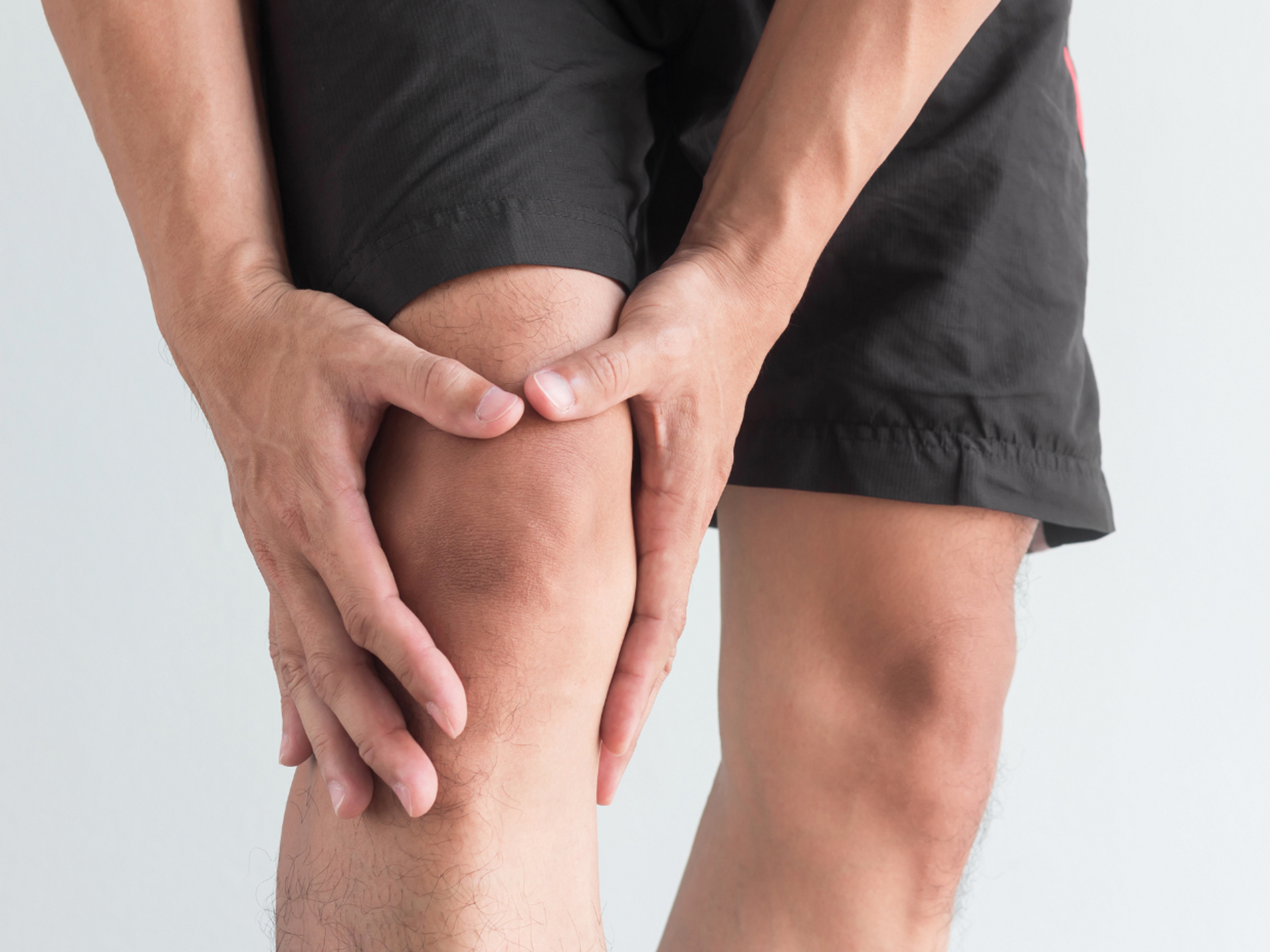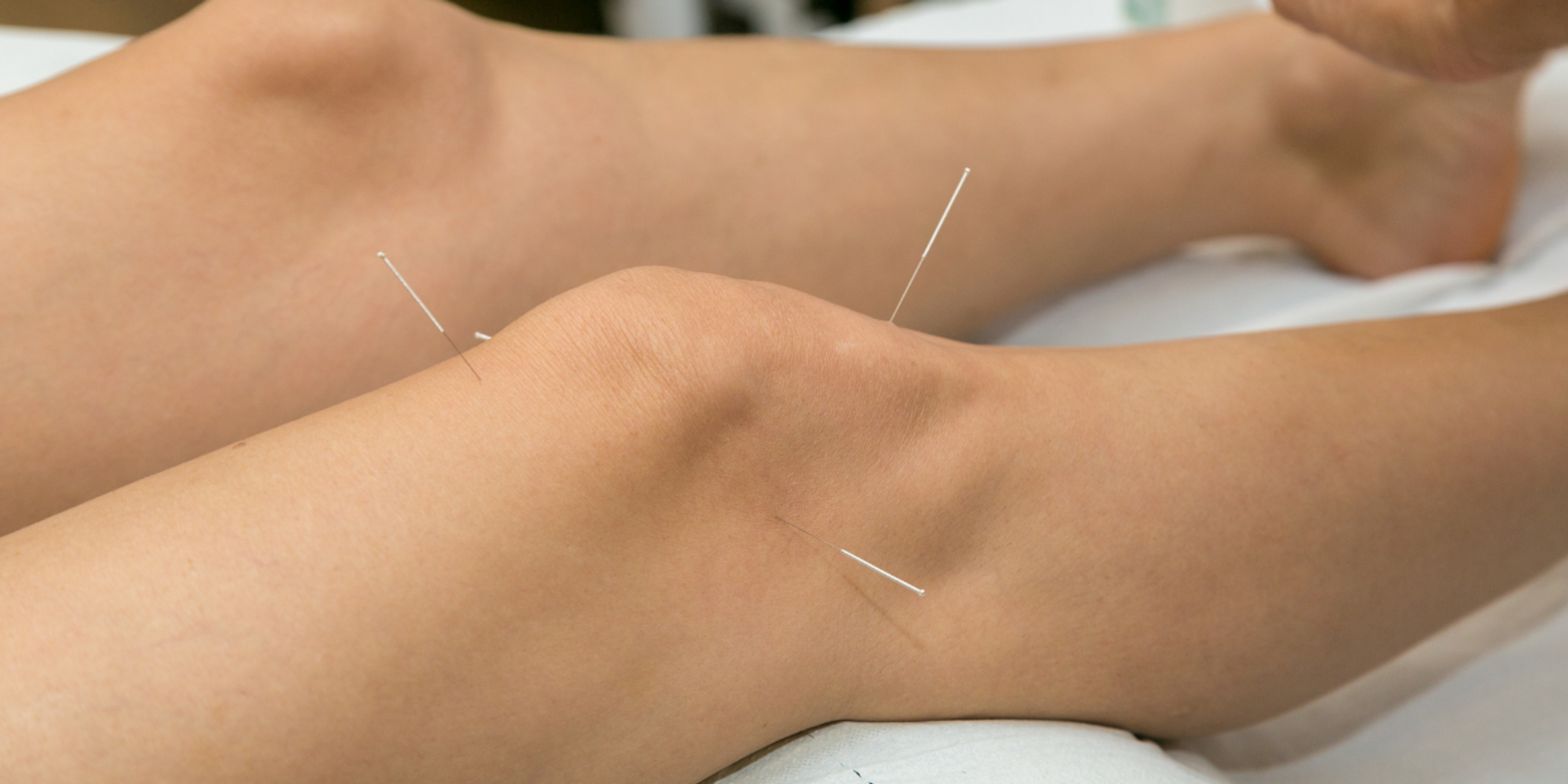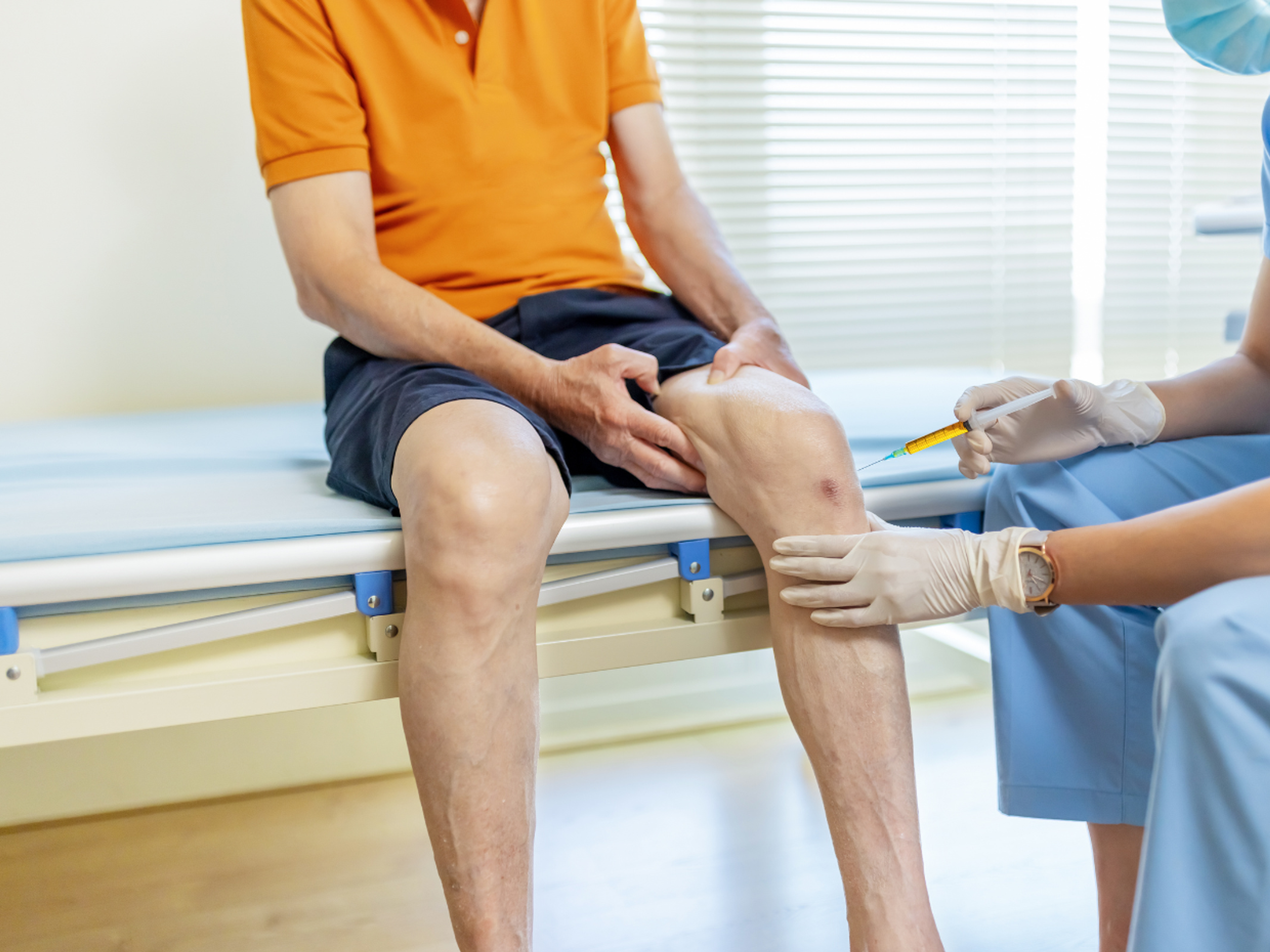An overview of meniscus tears: Causes, symptoms, diagnosis, and treatment options
An overview of the knee and meniscus
The knee structure and function
The knee joint is formed by the thigh bone (femur) at the top, the shinbone (tibia) at the bottom, and your kneecap (patella) at the front. It's a hinge joint that bends and straightens your leg.
Slippery cartilage covers the surfaces of the knee joints – keeping the bones cushioned and gliding smoothly over each other, preventing friction and wear and tear.
What is a meniscus and why is it important?
A meniscus is a c-shaped, wedged disc of rubbery cartilage attached to the flat surface of the shinbone. Each knee has two menisci, one on the inner side (medial meniscus) and one on the outer side (lateral meniscus).
Menisci act as little shock absorbers and help with weight distribution in the knee. They also improve knee stability and proprioception (body position sense).
What are the main muscles around the knee?
The quadriceps muscles (front of thigh) straighten the knee, and the hamstring muscles (back of thigh) bend the knee. They also protect it from being forced into unsafe positions during movement.
What do the ligaments in the knee do?
Knee ligaments help stabilize the joint. The medial and lateral collateral ligaments (MCL and LCL) on the inner and outer sides of the knee joint keep it from moving too far out to the sides.
Your MCL attaches to your medial meniscus; This limits how much the medial meniscus can move and makes it more vulnerable to injury. This is thought to be one of the reasons why medial meniscus tears are more common than lateral meniscus tears.
The anterior and posterior cruciate ligaments (ACL and PCL), located in the middle of the knee joint, stop it from over-bending and over-straightening.
Symptoms of meniscus tears
Sometimes, a meniscus tear is felt as a sharp twinge of pain inside the knee, which then subsides and disappears, and you only start noticing pain again a few days later.
Other times, the pain is felt immediately, and the symptoms increase over a few hours. Common symptoms are:
- Pain along the knee joint line - the location of the pain correlates to the part of the meniscus you injured
- Puffiness or swelling around the knee
- Stiffness or difficulty moving the knee
- Clicking, catching, locking, or giving way sensations in the knee
Depending on the severity of your injury, you may feel none, all, or a combination of these symptoms.
Causes of meniscus tears
Meniscus tears can be caused by trauma (acute tears) or wear and tear (degenerative tears).
Causes of acute meniscus tears
They usually happen with twisting or pivoting on a fixed foot, knocks to the knee, or when the knee is overstretched.
Contact sports like soccer and rugby increase your risk, while running is considered a low risk for acute tears. An injury to any of the ligaments in the knee may also increase your risk.
How does wear and tear cause your meniscus to tear?
Research shows that meniscus tears in people over 30 usually occur due to wear and tear. As you age, normal degenerative changes happen in your connective tissue, bones, and muscles. They become a bit softer and less pliable over time and can't take the same amount of force (load) as they used to.
The highest risk factors for degenerative meniscus tears are:
- Increased age (> 60 years),
- Male gender (up to 3 times more in men than women)
- Work-related kneeling or squatting (>1 hour a day)
- Repetitive stair climbing (> 30 flights a day)
- Carrying heavy weights or being overweight (BMI > 25)
How are meniscus tears diagnosed?
In most cases, an experienced doctor or physical therapist will be able to diagnose your meniscus tear by listening to how you injured your knee, what your symptoms are, and assessing your knee's movement through specific tests.
The tests most commonly used are the following:
- Joint line tenderness test - the clinician will press along the knee joint line to find where the pain is located.
- Apley's grind test - the patient lies on their front with their knee bent to 90°. The clinician then applies a downward force through the lower leg into the knee joint while twisting it from side to side.
- McMurray's test - the patient is on their back, and the clinician moves their leg from straight to fully flexed while twisting it in and out.
- Thessaly 20° test - the patient is asked to balance on the injured leg, bend their knee to 20°, and then twist slowly from side to side.
Do you need a scan if you have a meniscus tear?
It's not always necessary for you to have a scan to diagnose a meniscus tear. It's only needed if a doctor feels they cannot make an accurate diagnosis by performing the manual tests discussed above.
MRI scans help doctors identify the location and type of tear and help them decide on surgical options (if necessary). It can also help to rule out other injuries like ligament tears.
X-rays are only helpful if your doctor suspects you have broken something inside your knee. They don't show soft tissue like ligaments or the menisci.
MRI alone is unreliable for diagnosing and directing treatment choices for meniscus tears. Research shows up to half of people over 40 have a meniscus tear with no symptoms, which doesn't bother them at all.
Important: Not all meniscal tears seen on MRI need surgery!
What are the treatment options for a meniscus tear?
Most meniscus tears can recover through a conservative treatment plan that usually includes a mix of assistive devices to help protect the knee, treatments that help reduce pain and swelling, and a rehab plan that restores the function of the knee.
Every person's treatment plan will look slightly different, as the choice of treatments will depend on the severity of their injury.
If conservative treatment doesn't improve your symptoms within three months, your tear may require surgical treatment.
Let's look at all the treatments in more detail.
Treatments that protect the meniscus
These treatments can help to protect and reduce the load on your torn meniscus, allowing you to move and be active while it recovers. Protecting your knee can reduce pain and swelling and speed up your recovery.
- Relative rest: You usually don't have to rest completely, but you do have to reduce your activities (standing, walking, climbing stairs, and sports) to a level that you can comfortably do and doesn't increase your pain and swelling.
- Crutches: If you're struggling to walk normally, crutches can help reduce the load on your injured meniscus and allow it to recover more quickly. Trying to be brave and force through pain usually leads to more swelling and pain.
- Knee braces: Not everyone with a torn meniscus requires a brace, but they can be useful in some cases. We've previously discussed the pros and cons of the different braces you can wear for a meniscus tear.
Treatments that reduce pain and swelling
Being in pain or having an excessively swollen knee can mess with your sleep, interfere with work and social activities and prevent you from doing your rehab. Finding ways to reduce this can be helpful.
- Gentle movement (find exercise examples here): Keeping an injured joint very still usually makes it hurt more, swell more, and slow recovery. Joints rely on changes in pressure caused by movement to move nutrients and oxygen into the joint and extra fluid out. If you keep your knee too still, it struggles to get the nutrients it needs to repair your meniscus, and the swelling caused by the injury accumulates.
- Anti-inflammatory medication can help reduce pain and excessive swelling and inflammation. However, it may also affect your healing, and it is best only to use it if truly needed.
- Using ice to reduce symptoms may be a better option than medication because it has fewer side effects.
- Taping your knee can help reduce swelling.
- Acupuncture is another safe alternative to medication. We've previously written about how acupuncture can help meniscus tears.
- Corticosteroid injections should be used sparingly. They are very good at reducing pain and swelling but may affect your healing in the longer term. Read more about the benefits and harms of cortisone injections for meniscus tears here.
A progressive rehab plan to restore knee function
Following a progressive rehab plan is the only way to restore your knee's full strength and mobility after tearing a meniscus.
What is a progressive rehab plan? It's a plan that:
- Starts with easy, low-load exercises that don't aggravate your injury
- Slowly increases in intensity and difficulty as your injury recovers until the exercises match the level required for the activities you want to do
- Is designed with your personal goals in mind - the exercises and rehab plan for a runner will and should look different from one for someone who isn't interested in sport and just want to walk
The Exakt health app contains a science-backed rehab program that guides you from the moment you tear your meniscus back to running. It's intuitive and uses your feedback after each exercise session to progress you through the rehab stages.
Surgery for meniscus tears
During surgery, they either repair the torn meniscus or remove part (partial meniscectomy) or all of the meniscus (total meniscectomy). Not all meniscus tears require or benefit from surgery. Treatment of a meniscus tear depends on the following:
- Symptoms
- Age
- Activity levels
- Location
- Type of tear
Age, symptoms, activity levels
Meniscus tears may cause mild to severe symptoms at the start. Then it usually settles down over several weeks or months.
For people over 40, surgery is not recommended once the initial injury settles down if your symptoms don't interfere with daily activities. Non-surgical treatment is preferred because it produces similar results with fewer complications and costs.
The younger you are, the less wear and tear in your knee joints, and the better your body heals from surgery. Surgery is a valid option if you're young and very active. However, you don't have to have surgery. A meniscus tear in a young person can recover without surgery.
Location of meniscus tears
When people ask if a meniscus tear will "heal", they usually mean, "Will the tear grow back together?". Full recovery from a meniscus tear doesn't actually require the tear to fuse. More on this later.
A meniscus tear heals (grows back together) as long as there's a good blood supply in the area. In the c-shaped ring of the meniscus, the blood supply zones are:
- The outer red zone (RZ): good blood supply, good chance of healing
- Middle zone (MZ): minimal blood supply, limited chance of healing
- The inner white zone (WZ): no blood supply, no chance of healing
If your tear is in a 'no blood supply' zone, it will likely not grow back together and can't be repaired with surgery. The only surgical option is to remove part of the meniscus.
However, don't let the location of your tear worry you. Studies have shown that you can have a fully functional, pain-free knee even if you have a meniscus tear that hasn't grown back together.
We know this sounds strange, but if you allow your meniscus tear to settle and calm down while you strengthen the muscles that control your knee, you can regain full function despite the tear still being present.
Can a meniscus tear heal?
Type of meniscus tears
There are several different types of meniscus tears. Examples include horizontal, longitudinal, radial, bucket handle, flap, and degenerative tears. They can occur in the different blood supply zones.
The most frequently found is the radial tear. Bucket handle tears can lock your knee joint. These tears usually need surgery because it's the only way to free up your knee movement and stop it from locking.
Is it worth having meniscus surgery?
For most meniscus tears, surgery isn't the best option.
The menisci are very important parts of the knee joints, keeping them healthy for longer. There is evidence that removing a meniscus can cause osteoarthritis (OA) of the knee and may increase the likelihood of needing a knee replacement. This is why surgeons would rather repair the meniscus than remove it. Still, as mentioned before, this is only sometimes possible.
Meniscus surgery may not improve your symptoms, especially if you have OA already or if your injury is due to wear and tear.
Surgery doesn't necessarily speed up recovery time because you will still need to follow a rehab plan to return to your pre-injury activities after surgery.
When researchers look at the long-term effect of surgery vs. rehabilitation, it seems to produce similar results at 12 months post-injury, i.e., an equal number of patients report improvements, no improvement, or being worse off. Therefore, it is always worth trying a conservative approach before surgery.
Conservative treatment vs. surgery
How long does it take to heal a meniscus tear?
Most straight-forward meniscus tears recover in about 12 -24 weeks with conservative treatment. Some may take up to 12 months to get back to full sport. The healing time depends on your unique injury history and symptoms and the type of sport or activities you want to get back to.
Now that you have a good overview of meniscus injuries, you may find it useful to understand how the rehab process works and what type of exercises to do.






